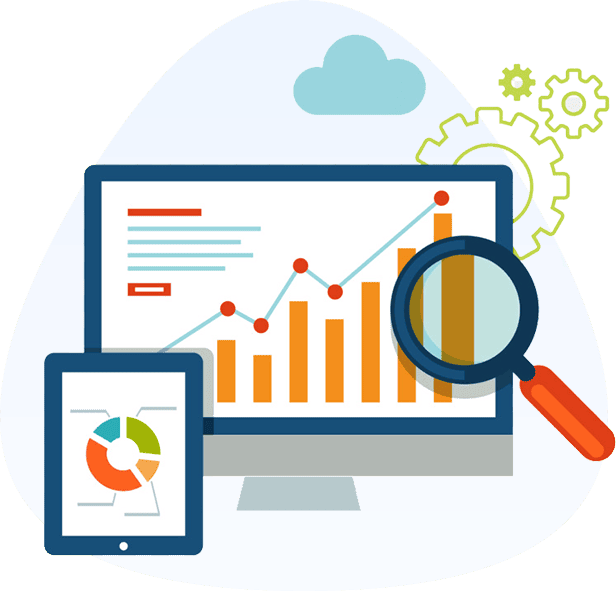THE SEO AGENCY OF CHOICE FOR ECOMMERCE STORES
Ecommerce SEO
Agency
If you’re looking for an award-winning eCommerce SEO agency that helps website owners realise their potential, you’ve come to the right place.
Our mission is to help eCommerce store owners climb search engine rankings to help them achieve growth that is both predictable and scalable.

A Simple Process For Big Results On Search Engines
Our eCommerce SEO agency is dedicated to providing big results for your company without all the complicated jargon you find elsewhere.
We keep you updated each step of the way so you know your eCommerce website is growing from the search engine optimisation we are doing.
After the first call with us, we know you will be confident with our process.
Ecommerce SEO Strategy
Our research & planning include a website audit & a custom eCommerce SEO strategy. We research your competitors and highlight what’s necessary to increase your rankings on the search engines.
Technical Audits & Fixes
Taking information from the website audit, we make adjustments to your online store, fix technical problems, fix site architecture, start building content and product page optimization.
Link Building & Promotion
We build hundreds of every month and know where to place them. This is a very important part of the eCommerce SEO strategy. it helps to drive traffic to your site and build domain authority.

Live Reporting
Ecommerce SEO Agency uses a custom-built state-of-the-art reporting system designed through Google Data Studio.
This allows our eCommerce SEO clients to see keyword improvements, sales revenue, our SEO strategies, improvements to product pages, conversion, organic search results, site speed and links we have placed on external sites, you will also have an SEO consultant on standby if you have any questions.
With this approach, you’re allowed to peek behind the curtain and discover what we are doing and how we are doing it.
Because we trust our methods and want to help realise your SEO strategy entirely, we’re happy to share all the details.
If you have any queries, questions, or concerns, we will provide you with a dedicated account manager who is dedicated to your SEO campaign.
You can speak to them whenever you want and get an answer that we know you’ll be satisfied with.
Why Is SEO Important For Ecommerce Website?
SEO for your eCommerce websites provides one of the highest and most effective returns on your investment. It can offer higher returns than paid digital marketing campaigns, and we can help to offload this aspect of your marketing so you can focus on the next stage of your company’s evolution.
We understand that detailed and well-planned eCommerce SEO strategies will generate leads and sales on autopilot.
Ecommerce SEO services provide another tool to push more sales through your online stores. This is not to completely replace social media, email marketing or retargeting campaigns. SEO works brilliantly when combined with other marketing strategies.
You also mustn’t ignore the potential for social media and email marketing or retargeting campaigns. Considering how many people use social media, and also how long everyone spends online each day, it makes sense to embrace the power of an eCommerce SEO campaign to boost your company’s success and increase profits.
Our Ecommerce Experience
We are experienced with working on almost any eCommerce platform.
So, whether you use Shopify, Magento, or WordPress, we have the tools and the experience to dramatically increase your website traffic and sales.
Our team has worked with an array of companies from a plethora of industries, which means we already know how to get the most out of your SEO eCommerce potential.
Our award-winning performance speaks for itself, and we want to continue this trend by helping your business.
An Ecommerce SEO Agency That Gets You Results
Our proven results will drive traffic, engagement, and sales to your website, allowing you to reach and exceed your business goals.
OUR BLOG CONTENT
The Benefits Of Blogging For Ecommerce
A well-written and informative blog can do magic for search engine results and online sales.
Many benefits come from blogging on eCommerce websites. The written word gives your customers the chance to hear from you directly, making it an organic opportunity to engage with customers.
Our eCommerce SEO agency carries out keyword research and uses proven SEO strategies to drive sales online.
- Transparency & trust
- Years of eCommerce SEO expertise
- Deep understanding of keyword research
- Experience with technical SEO
- Experience working on most popular eCommerce platforms
- A tried and tested formula to get you your desired search results
- An expert SEO team
- Diverse content strategy
- Experience working with a wide range of different eCommerce websites
- E-Commerce SEO services designed to get real results
Testimonial
Our Happy Client
Lorem ipsum dolor sit amet, consectetur adipisicing elit, sed do eiusmod tempor incididunt ut labore et dolore magna aliqua.
